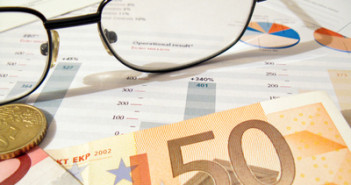EUR/USD had a rough week and finds itself in the low-1.28 range in Monday’s European session. The euro lost ground on Thursday after Mario Draghi’s dovish remarks, and dropped further on Friday after strong US employment data. In economic releases, Monday didn’t start out well as German Trade Balance dropped to a thirteen-month low, and Eurozone Sentix Investor Confidence failed to meet the estimate. The Eurozone finance ministers meet in Brussels, and Mario Draghi will address a European parliament committee in the Belgium capital. In the US, it’s a slow start to the week, with just one minor release on the schedule.
Here is a quick update on the technical situation, indicators, and market sentiment that moves euro/dollar.
EUR/USD Technical
- Asian session: Euro/dollar was steady, touching a low of 1.2812 and consolidating at 1.2827. In the European session, the pair is unchanged.
Current range: 1.2800 – 1.2840.
Further levels in both directions:Â 
- Below: 1.28, 1.2750, 1.27, 1.2660 and 1.26.
- Above: 1.2840, 1.2890, 1.2940, 1.30, 1.3050, 1.3100, 1.3160, 1.32, 1.3255, 1.3350 and 1.34
- 1.2800 is providing weak support. 1.2750 is next.
- On the upside, the pair is testing 1.2840. This is followed by 1.2890.
Euro struggling as fallout from strong US NFPs continues – click on the graph to enlarge.
EUR/USD Fundamentals
- 6:00Â German Trade Balance. Exp. 17.4B. Actual 14.1B.
- 8:30Â Eurozone Sentix Investor Confidence. Exp. -11.5 points. Actual -12.6 points.
- All Day – Eurogroup Meetings.
- 10:00 German Industrial Production. Exp. -0.5%.
- 12:30 ECB President Mario Draghi Speaks.
- 19:00 US Consumer Credit. Exp. 13.2B.
For more events and lines, see the EUR/USD.
EUR/USD Sentiment
<img alt=â€EUR USD Daily Forecast July 5th†src=â€http://forexcrunch.wpengine.netdna-cdn.com/wp-content/uploads/2013/07/EUR-USD-Daily-Forecast-July-5th-350×196.png†width=â€350″ height=â€196″ />
- US NFPs boost greenback: The US ended the week in style, with a solid Non-Farm Payrolls release on Friday. The key indicator cruised to a four-month high, with 200 thousand new jobs. This easily surpassed the estimate of 163 thousand. Unemployment Claims, released earlier in the week, looked good, coming in just below the estimate. There are several reasons why this report is so positive. The Unemployment Rate stayed put at 7.6%. The US dollar is broadly stronger for two reasons. First, the strong employment data points to an improving economy. Second, there is now a stronger likelihood that the Federal Reserve could taper QE, which would be a dollar-positive event.
- Draghi comments sends euro lower: It’s a scenario we’ve seen before. The ECB announces a rate decision which meets expectations, and then Mario Draghi hosts a press conference and the euro dives. This was the case on Thursday, as the ECB maintained the key interest rate at 0.50%, as widely expected. However, at a follow-up press conference, Draghi stated that monetary policy would remain loose, and he did not foresee any hike in interest rates, given the low growth in the Eurozone. The markets reacted negatively to Draghi’s dovish comments, and the euro lost around one cent against the US dollar on Thursday.
- Portugal crisis eases: The political crisis which gripped Portugal last week is over, according to Prime Minister Pedro Passos Coelho. The country has been struggling with austerity measures as part of its bailout program, and the government was rocked by the resignations of the finance and foreign ministers last week. Coelho said a deal had been reached with a junior coalition party, which would ensure that the government continues to run the country. There was concern that the crisis could derail the 78 billion bailout agreement. The political deal is subject to the approval of Portugal’s president, Anibal Cavaco Silva. He is scheduled to meet with political parties Monday and Tuesday.
- Eurogroup to discuss Greek bailout: Eurozone financial ministers are meeting in Brussels on Monday, and the Greek bailout is high on the agenda. Eurozone officials have expressed dissatisfaction with the lack of progress by Athens in implementing the bailout conditions, including budget cut shortfalls and cuts to the bloated public service. The next tranche of bailout funds amounts to some EUR 8.1 billion, but these funds will not be delivered before the troika gives the go-ahead. The Eurogroup could decide to pay the next tranche in smaller installments, each one condtional on Greece meeting specific milestones in the restructuring of its economy.



